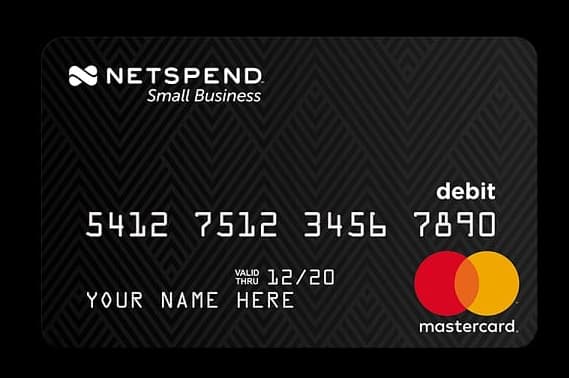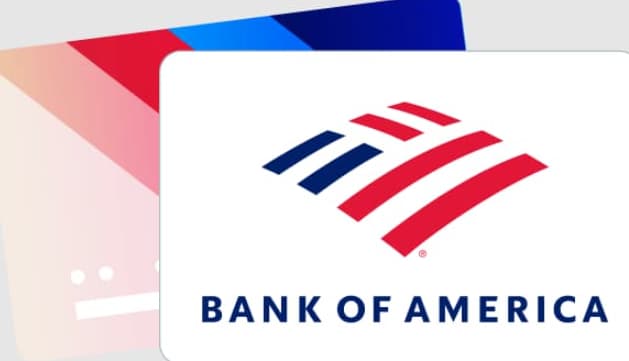Preparing adequately for retirement is critical to ensure financial stability and maintain your standard of living in your later years.
With inflation steadily rising and markets increasingly volatile, diversifying your investments – including incorporating alternative assets like physical gold and silver – can help mitigate risk and preserve your nest egg’s purchasing power over the long run.
There are a lot of question marks there, as you can see here: https://digitalcommons.usf.edu/numeracy/vol6/iss2/art6/.
How to Incorporate Gold into Your Retirement Planning?

This comprehensive guide will walk through the key aspects of retirement planning, and types of accounts, and detail why and how to invest in precious metals like gold through retirement vehicles.
Gold Investment Options for Retirement Planning
With smart planning and savvy investing, you can set yourself up for a comfortable and secure retirement ahead.
The Basics: Understanding Retirement Planning
Retirement planning refers to the process of determining financial goals for your post-work years and creating strategies to achieve a secure and comfortable retirement lifestyle. This involves:
- Analyzing current income, expenses, lifestyle goals, and projecting future costs to estimate how much money you’ll need in retirement
- Implementing plans to save and invest towards your retirement income target
- Managing debt and maximizing returns on investments
- Calculating your desired retirement age or transition timeline
The overarching goal is to accumulate sufficient retirement savings and income streams to maintain your desired standard of living in your later years. This requires forethought, discipline, and careful strategy a decade in advance of your retirement.
With Americans enjoying longer life expectancies, retirement can last 30 years or more – making adequate planning especially critical.
Types of Retirement Accounts
There are several common types of retirement accounts, each with unique tax benefits, contribution limits, withdrawal rules, and investment options. The key accounts include:
IRAs
IRAs, or Individual Retirement Accounts, are self-directed retirement accounts that allow tax-deferred growth on investments. Key features include:
- Tax advantages: Contributions may be tax-deductible depending on income limits. Investments grow tax-deferred and withdrawals in retirement are taxed as ordinary income
- Higher contribution limits: $6,000 annually for those under 50, $7,000 for those 50+
- Investment flexibility: Invest in stocks, bonds, mutual funds, ETFs, and even alternative assets like physical gold and silver coins/bullion
- Early withdrawal penalties: Discouraged before age 59.5, triggering taxes and penalties
In short, IRAs incentivize saving for retirement while allowing investors to customize their portfolios. You can read more about them in articles like this one.
Types of IRAs
There are several types of IRAs with minor differences:
- Traditional IRAs: Pre-tax contributions to lower current taxable income
- Roth IRAs: After-tax contributions, tax-free growth and withdrawals
- Rollover IRAs: Accept and consolidate funds from other retirement accounts like 401(k)s
- Self-directed IRAs: Allow non-traditional alternative investments like physical gold/silver, real estate, private equity, etc.
For those looking to invest in gold for their retirement, self-directed IRAs can be very appealing since they allow investing in IRS-approved precious metals like American Eagle coins/bars and bullion meeting minimum fineness requirements.
Pensions
A pension is an employer-sponsored retirement plan where companies contribute to a pool of capital that pays out fixed income streams to employees in retirement. Key attributes include:
- Fixed payouts: Former employees receive steady payments from the pension fund through retirement
- Vesting: Requires minimum years of service before pension benefits are “vested” or owned fully
- Rarity: Dramatically declined in favor – under 13% of private-sector workers have pensions today
Due to their high costs and risks to sponsor firms, pensions are increasingly rare today – especially amongst private companies. However, they can provide secure, fixed retirement income if you have access.
401(k) Plans
401(k) accounts are likely the most ubiquitous employee-sponsored retirement plan today. Key features include:
- Tax benefits: Pre-tax contributions and tax-deferred growth to incentivize investing
- Employer matching: Many companies match contributions up to 3-6% of income
- Early withdrawal penalties: Discouraged before age 59.5 through taxes/fees
- Investment menu: Usually ~15-30 mutual fund or ETF options curated by the plan provider
- Consolidation option: Can be rolled over into a Rollover IRA with far wider investment capabilities after leaving an employer, including gold
For many workers today, 401(k) plans will be their sole dedicated retirement savings account – making consistent contributions and wise investing in these plans is especially important.
Why Consider Investing in Gold?
From stocks and bonds to commodities like gold – investors have countless options when building their retirement portfolios. But why specifically consider allocating towards physical gold bullion or coins? There are several compelling reasons:
Inflation Hedge
- With central banks printing immense amounts of money, inflation has dramatically picked up – quickly eroding the purchasing power of cash and fixed-income investments. Gold has historically kept pace with or outperformed inflation over longer periods, helping preserve retirees’ nest eggs.
Portfolio Diversification
- Commodities like gold have low historical correlations to stocks and bonds – meaning their prices don’t always move in tandem together. Adding non-correlated assets helps smooth volatility over market cycles.
Weakens Currency Dependence
- Gold functions as currency representing stored economic value. Blending both gold and currency provides stability against financial turmoil or governments debasing legal tender through excessive money printing.
In short – gold serves as a balanced, uncorrelated asset to hedge against inflation, market volatility, currency devaluation downside risks prevalent in traditional assets like stocks and treasuries. That’s what makes it especially appealing for retirement portfolios.
Investing in Gold for Retirement
If investing in physical gold as part of your retirement plan interests you, there are several avenues to pursue:
- Gold IRAs
By establishing a Self-Directed IRA (SDIRA) – which empowers you to invest in alternative assets beyond conventional securities – you can hold physical gold coins and bullion bars. Retaining IRA status means you still benefit from the tax incentives. Reputable precious metals firms can help streamline setting up a Gold IRA to secure your future.
- Rollover 401(k) to Gold IRA
By now, you may have heard about buying physical gold with 401k, If you want more control than your 401(k) provides, you can rollover funds from an old employer’s 401(k) plan into a self-directed Rollover IRA upon leaving the company. This allows not only investing in gold but also direct control and flexibility over your full investment portfolio.
- Gold ETFs
If you prefer easy liquidity via your standard brokerage account, you can invest in gold Exchange Traded Funds (ETFs) like IAU or GLD. These hold bullion in vaults and trade throughout the day like stocks. While convenient, they come with indirect ownership and counterparty risks.
- Physical Gold Coins
Finally, you can directly buy IRS-approved physical gold coins like American Eagles or Canadian Maples to hold personally. This allows direct asset ownership outside the banking system. The coins can then be handed down as intergenerational wealth to heirs.
Is Investing Retirement Funds in Gold Wise?
Allocating a portion of retirement assets to physical gold – generally 5-20% – can be prudent for the inflation-hedging and portfolio stabilization benefits highlighted above. However, there are a few risks to consider:
- Illiquidity
Unlike stocks or funds, physical gold can’t be instantly sold with the click of a button. Sourcing interested buyers and agreeing to fair terms does take some patience.
- Storage Overhead
Storing high-value physical gold does require secure storage – either paying for a depository/vault or installing home safes. These costs should be accounted for.
- Tax Implications
Cashing out gold held inside retirement accounts can trigger income taxes plus penalties if taken too early. Be mindful of tax impacts at withdrawal.
In summary – when appropriately allocated and held for the long term, gold’s stability and enduring value help buffer retirement portfolios against various economic and inflation risks. But it is wise to be aware of the responsibilities and tradeoffs as well.
Frequently Asked Questions
Here are answers to some of the most common questions regarding incorporating physical gold into retirement planning:
- Can I withdraw physical gold coins/bars from my Gold IRA?
Yes – you can opt to take distribution of the physical gold held in your Self-Directed IRA once you reach retirement age without early withdrawal penalties. This allows redeeming your balance not in cash but in real tangible gold free from counterparty risks.
- What percentage of my portfolio should gold comprise?
5%-20% is generally recommended, as too little fails to provide sufficient diversification while too much overexposes to a single volatile commodity. Rebalance occasionally.
- What types of gold can be held in an IRA?
IRS rules require IRA-approved gold types with a minimum 99.5% purity including American Eagle coins, Canadian Maple Leafs, American Buffalos, Austrian Philharmonics, gold bars, and rounds from mints meeting fineness standards.
- Are gains on physical gold taxed differently than paper securities?
In taxable accounts, physical gold may receive capital gains treatment allowing lower tax rates when sold at a profit vs. short-term securities taxed as ordinary income. IRAs defer taxes until retirement.
- Where should I store physical gold for safety?
Home safes, bank safe deposit boxes, and private vaults operated by reputable precious metals dealers offer secure storage. Firms also handle transport logistics discreetly.
You Must Read:
In Summary: Smart Retirement Planning With Gold
Saving adequately, investing wisely, and safeguarding your nest egg against inflation are all critical to realizing your desired retirement lifestyle. Allocating a reasonable portion to physical gold and silver serves as astute portfolio insurance – helping mitigate risks beyond your control.
Work with knowledgeable precious metals specialists to incorporate IRS-approved coins and bullion into tax-advantaged retirement vehicles like self-directed IRAs. This prudently blends enduring hard assets with traditional income streams for more balanced growth over the long run.
Stay vigilant and proactive decades in advance to make your golden years comfortable, rewarding, and financially secure for the long road ahead. With the right discipline and diversification, you can prosper through both market booms and busts to come. Retirement awaits.



